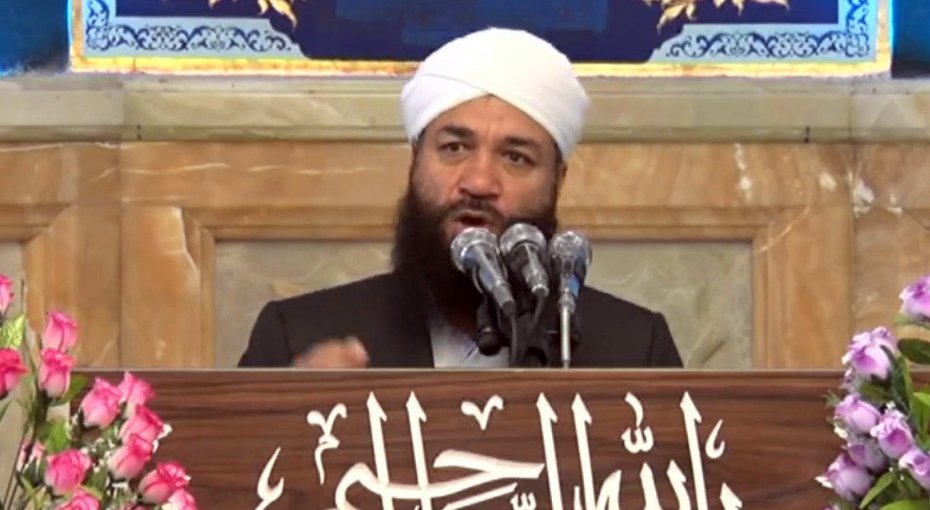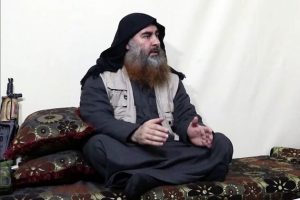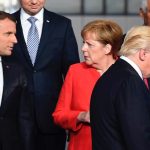by Fatemeh Aman
As Iran fires missiles into Syria as part of its “crushing response” to the perpetrators of the recent unprecedented terrorist attacks in Tehran, these attacks can also have an enormous impact on Iran’s internal politics. They could further solidify the position of the Islamic Revolutionary Guard Corps (IRGC) and its support within the population and lead to an intensified crackdown on prisoners from minority groups. Conservatives have called for confronting “spies who have nested in the offices of some officials.” There have also been reports that the Iranian authorities may have tolerated certain Salafist groups to combat liberal and leftist Kurdish groups.
For years, the Iranian authorities denied the existence of al-Qaeda members or sympathizers in Iran. Even in 2013, when Canadian police charged two men with plotting a major terrorist attack in Canada who’d received support from al-Qaeda inside Iran, Iran’s foreign minister at the time, Ali Akbar Salehi, called the notion of al-Qaeda in Iran “the most laughable claim ever.”
Iran is no stranger to terrorist attacks. Apart from the early years of the Islamic Revolution in 1979, when armed opposition groups conducted some brutal terrorist attacks in Tehran and other major cities, the attacks have taken place mostly in the eastern border regions with Afghanistan and Pakistan and the western Kurdistan region neighboring Iraq and Turkey. The latest attacks, however, happened in the heart of Tehran: Iran’s parliament and the mausoleum of the founder of the Islamic Revolution, Ayatollah Khomeini. These incidents, which greatly shocked Iranians, were blamed on Kurdish members of the Islamic State (ISIS or IS). In a video, the perpetrators, speaking in Arabic with a Kurdish accent, called on all Sunnis to join them.
The Iranian authorities, including the Supreme Leader, have always argued that the deployment of troops to Syria has been to prevent IS from bringing the fight to border cities and inside. But now, Iranians have watched an IS attack in the heart of the country, undermining the notion that fighting in Syria would bring security to Iran.
Interestingly, the focus this time has been on Kurdish IS sympathizers in Iran, not Baluchis. The leaders of the Kurdish-populated provinces and Sunni-majority Sistan-Baluchistan province have strongly condemned the attacks, stressing the importance of unity among all Sunni and Shia citizens. Molavi Abdolmajid Moradzehi, a prominent Sunni scholar from Sistan-Baluchistan, stated also that Sunnis in Iran face discrimination. Pointing to the absence of any Sunnis in high-ranking positions in the cabinet or as governors, he called on the authorities to fill the gaps and increase Sunnis’ participation. “Only the integration of Sunnis, respecting the rights of minorities within the framework of constitution, and participation of Sunnis in local and countrywide leadership would take away any reason for people to join al-Qaeda or IS,” he added.
Sunnis are spread across the entire country. Some provinces, such as Kurdistan in the country’s northwest and Baluchistan in eastern Iran, are mainly Sunni. Khuzestan province in the southwest, which adjoins Iraq, has an Arab Sunni population. In 1980, when Iraq invaded Iran, Saddam Hussein counted on the support of the Arab portion of the Khuzestan population. Not only did this not happen, but Arab Sunnis rallied behind the central government, and many were killed defending their homeland.
Salafist Kurds
The Center for Strategic Studies and Education of Iran’s Interior Ministry published a report last year on the activities of IS sympathizers in Kurdish regions. Referring to the activities of Kurdish Salafist groups such as Jaish Sahabeh, Kataib Qaed fi Kurdistan, Ansar al-Islam, and the Kurdistan Islamic Emirate, the report described the ethnic and religious ties between Iran and Iraqi Kurds as “a potential threat to the internal security of Iran.”
Mokhtar Houshmand, a Kurdish civil rights activist, states that three factors may have contributed to the rise of Salafism in Kurdish regions in late 1990s: the Taliban coming to power in Afghanistan, al-Qaeda moving into Afghanistan, and the rise of the Kurdish Salafist group Ansar al-Islam in Iraqi Kurdistan.
Since they strictly reject the concept of the nation, Salafist Kurds are fundamentally at odds with civil society activists, organizations that promote statehood, and supporters of an independent Kurdistan. In fact, Salafists have fought against NGOs involved in the regional issues of Kurdistan and also attacked Sunni religious leaders. In this way, the Salafists proved themselves a useful tool for the Iranian authorities to crush both leftists and Kurdish nationalists.
Some of the most useful information about the instrumental use of Salafists inside Iran comes from a memoir by Bahman Ahmadi Amuee. A prominent journalist and economic analyst arrested in 2009 and released in 2014, Amuee spent 10 months of his sentence in the same cell as several al-Qaeda prisoners and Salafist Kurds. He describes them as mostly rural youth with low literacy, a poorly informed understanding of the Qoran, and little interest in reading any books. Their only intellectual pride was to have memorized parts of verses from the Qoran.
Low literacy and poverty provide the perfect breeding ground for al-Qaeda and its vast financial resources. Some of these youths, Amuee writes, used al-Qaeda funds to study at Pakistani madrassas where they were even further immersed in extremist thinking. Amuee continues:
For the last 20 years, reformist thinking has had the highest acceptance among the populations of Kurdistan and Sistan-Baluchistan. However, the Kurds are socially and economically deprived and it appears that throughout history, central governments have paid little attention to their needs. We are in a very dangerous situation. In our Kurdistan we are facing several armed groups rivaling each other: IRGC, Basij [paramilitary forces], police forces, Komalah [Iranian Kurdish Communist Party], Democratic Party of Kurdistan, Pjak [The Kurdistan Free Life Party], and recently Al Qaeda and ISIS. In this environment it is hard to imagine any peaceful outcome.
In his trip to the city of Sanandaj in Kurdistan in 2010, Khamenei warned that many “clueless and deprived Salafist and Wahhabi folks [who are being nurtured by oil money to conduct terrorist operations] here and there [in Iraq, Pakistan, and Afghanistan] don’t realize themselves that they are enemies’ agents.”
Addressing Terrorism
Despite intense instability in some of its neighbors, Iran has been relatively successful in controlling the threat of terrorism. For this, everybody from the IRGC to the government likes to claim credit. Foreign Minister Javad Zarif accused Saudi Arabia of “actively” supporting terrorist groups along Iran’s eastern and western borders. How Iran will change its approach in confronting its “extremist enemies” remains to be seen. Countering terrorist attacks have always included harsh treatment of the peaceful opposition as well.
Iran’s Parliament Committee for National Security recommended forming a “Special Counterterrorism Force.” The task of this committee is still undefined. It could prove an effective tool but may also lead to a crackdown on the opposition. Another result, according to journalist Ehsan Mehrabi, will be expanding and updating security tools and equipment and modernizing approaches to securing the Majlis and other government buildings and institutions. The government might also revitalize brigades that in the past were charged with protecting officials.
Kurdish activists claim that Iran has promoted and expanded Salafist Wahhabi thinking in order to prevent the expansion of Kurdish nationalism or leftists. They also believe that strong anti-American sentiments among these groups would make them effective soldiers in fighting U.S. forces should Washington decide to attack Iran from the east or west. Even if these claims are exaggerated, Iran has treated Kurdish leftists and separatists much more harshly than it has Salafist Wahhabi prisoners.
Using extremism as a weapon is unpredictable and often produces a backlash. What evolves from an extreme ideology is sometimes more dangerous and more difficult to contain. The enemies of our enemies are often not our friends. The Middle East teaches us this lesson over and over again.
Photo: Molavi Abdolmajid Moradzehi





